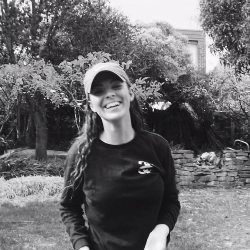Designing landing pages involves applying graphic design principles to create a user experience that is both engaging and effective in converting visitors into customers, subscribers, or users. Here are key principles with technical examples:
1. Clarity and Simplicity
Single Focus: Ensure the landing page has one primary goal or message.
Technical Example:
Use a single, bold headline like "Get Your Free Ebook Now" with one prominent call-to-action (CTA) button, keeping the page free from clutter.
2. Hierarchy
Visual Importance: Guide the visitor through the page by prioritizing content.
Technical Example:
Use size and color to make the headline the largest text at 36pt in a bold, sans-serif font like "Open Sans", followed by smaller subheadings and body text.
3. Alignment
Order and Flow: Align elements to create a logical flow that guides the user's eye.
Technical Example:
Center-align the headline with left-aligned text and CTA button below it, using a grid system to ensure elements line up perfectly.
4. Contrast
Visibility: Use contrast to make important elements stand out.
Technical Example:
If the background is light (#F0F0F0), use a dark color for the CTA button (#333333) to make it pop.
5. Consistency
Branding: Keep design elements consistent with the brand's identity.
Technical Example:
Use brand colors consistently; if the brand uses blue (#007BFF) and white, ensure these colors dominate the landing page's palette.
6. Space
Breathing Room: Use white space to separate elements and reduce visual noise.
Technical Example:
Place generous margins around content blocks, ensuring there's space between headers, images, and the CTA button for a clean look.
7. Typography
Readability and Impact: Choose fonts that are legible and convey the right tone.
Technical Example:
Use a modern sans-serif like "Roboto" for body text at 16pt, with a contrasting serif font like "Merriweather" for headlines at 48pt.
8. Color Theory
Emotion and Action: Colors should not only match the brand but also encourage action.
Technical Example:
Orange (#FF6347) can be used for CTA buttons to suggest urgency and excitement, prompting users to click.
9. Imagery
Relevance and Quality: Images should support the message and be of high quality.
Technical Example:
Use a high-resolution hero image that relates directly to the product or service, optimized for web (e.g., JPEG at 70% quality for balance between file size and clarity).
10. Responsiveness
Multi-Device Compatibility: Design for various screen sizes.
Technical Example:
Use CSS media queries to adjust layout, font sizes, and image dimensions for mobile, tablet, and desktop views, ensuring readability and usability across devices.
11. Call to Action (CTA)
Clear and Compelling: Make it obvious what action you want the user to take.
Technical Example:
A CTA button labeled "Start Your Free Trial" in bold, with contrasting colors, placed prominently after the main content, perhaps with an arrow icon pointing to it.
12. Proximity
Group Related Items: Place related information or actions near each other.
Technical Example:
Position testimonials or benefits close to the sign-up form or CTA to reinforce the action you want taken.
13. Feedback
Interactive Elements: Use design to give feedback on user interactions.
Technical Example:
Implement hover effects on buttons or links, like a color change or shadow effect, to indicate they are clickable.
14. Load Time
Performance: Design with performance in mind to keep load times low.
Technical Example:
Compress images, use lazy loading for images below the fold, and minify CSS and JavaScript to reduce page load time.
By integrating these principles with technical considerations, landing pages can be designed to not only look good but also perform well in terms of user engagement and conversion rates. Remember, the ultimate goal is to guide the user smoothly towards the desired action while maintaining a visually appealing and brand-coherent experience.


